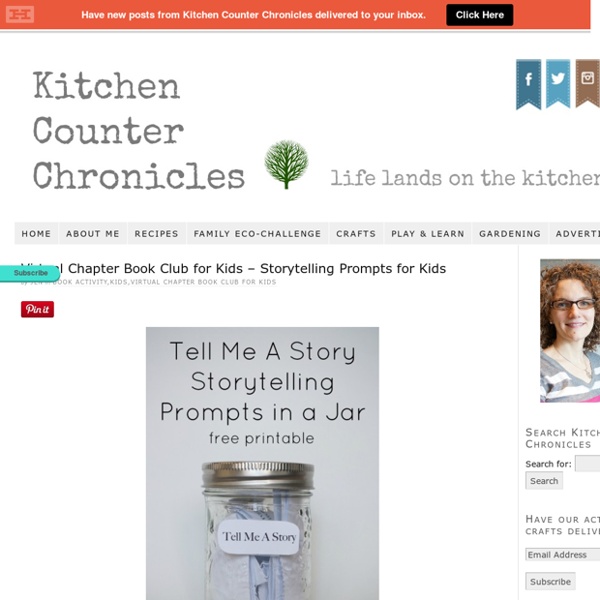Tydliggöra Lgr 11 i engelska
Kunskapsvägg Jag skall bygga upp en kunskapsvägg tillsammans med eleverna den här terminen för att tydliggöra vad vi ska göra och vad eleverna skall träna på för att nå kunskapskraven. Jag skall använda mig av Ulrika Elissons fina material som går att dra ut i Pdf-format på hennes blogg Ullis skolsida. Ulrika har skapat kunskapsväggar inom alla ämnen och årskurser som du kan hitta här: Tanken bakom är viktig För mig är det väldigt viktigt att det finns en tanke bakom arbetet och att eleverna får vara med i processen. Jag har gjort en Prezi som jag kommer att inleda höstens engelsklektioner med, där jag utifrån Ullis kunskapsvägg presenterar det centrala innehållet och de olika förmågorna. Min Prezi lägger jag in här och du är såklart varmt välkommen att använda den :)
The Flipped Learning Process Visually Explained
April 2, 2015 After yesterday’s post on “Flipped Learning Resources” one of our readers emailed us this beautiful visual outlining the six main steps involved in the creation of a flipped classroom. These steps include: planning, recording, sharing, changing, grouping, and regrouping. Read the graphic for more details on each of these steps. As a refresher for those who are not yet familiar with the concept of a flipped classroom. via Daily Genius Courtesy of eLearning Infographics
Between the Lions . Folk Tales and Fables
Come play again later! Come play again tomorrow!
Story Map
The Story Map interactive includes a set of graphic organizers designed to assist teachers and students in prewriting and postreading activities. The organizers are intended to focus on the key elements of character, setting, conflict, and resolution development. Students can develop multiple characters, for example, in preparation for writing their own fiction, or they may reflect on and further develop characters from stories they have read. After completing individual sections or the entire organizer, students have the ability to print out their final versions for feedback and assessment. The versatility of this tool allows it to be used in multiple contexts. Grades K – 2 | Lesson Plan | Standard Lesson Collaborative Stories 1: Prewriting and Drafting Students hone their teamwork skills and play off each other's writing strengths as they participate in prewriting activities for a story to be written collaboratively by the whole class. Grades K – 2 | Lesson Plan | Unit back to top
Tell a Story in a Jar!
Let your second grader’s imagination soar with a jar of story starters! This fun activity gives your child a jumping off point on the road to storytelling. What twists and turns will your child take? Creativity and sequencing skills combine to create wild stories that will have the whole family in stitches! What You Need: Clear glass jar (quart size or larger) 5 pieces of 8.5” X 11” paper Scissors Marker What You Do: “There once was a man with a talking dog.” “Yesterday, I traveled to the moon.” “There is a monster living in the house next door.” “You can get to a magical world through the door to my bedroom.” “Once upon a time, there was a family with 318 children.” “How does he feel?” “Then what happens?” “What should she do to fix that problem?” Start with a clear glass jar. Take the activity to another level by writing down your child’s story.
PowToon - Engelska förmågor
Embed code Select a size, the embed code changes based on your selection. _abc Powtoon Transcript I engelska ska du utveckla förmågan att förstå och tolka innehållet i talad engelska och i olika slags texter formulera dig och kommunicera i tal och skrift använda språkliga strategier för att förstå och göra dig förstådd vad innebär språkliga strategier??? CC creative commons attribution
The 10 best classroom tools for gathering feedback
Getting feedback from your students can serve multiple purposes: it can help you understand your students’ comprehension of the material, it can give you insight into what teaching methods work or don’t work, and it can help engage students in their learning process by knowing they have a voice that is heard. Not only can feedback offer insight for both teachers and students, it can be an integral part of group work and classroom time, given the plethora of connected devices in the hands of our students these days. That said, there are a lot of classroom tools available for gathering feedback. You can poll students or have them create a survey for a project, use clickers and other classroom response type tools in real time, get feedback on teaching methods, and more. But which tools are best? We’ve collected a few of our favorites and listed them below, along with some of the activities they’re best for. Twitter Socrative Verso Plickers Doodle Polldaddy Poll Everywhere Google Forms Kahoot
Awesome Visual Featuring 13 Important Google Search Tips for Students
February 7, 2015 Here is a new interesting visual on Google search tips that I want to bring to your attention. The visual features 13 practical features that would allow students to conduct smart and time-saving searches on Google. We have already covered these and several other tips in previous posts here in this blog, but it would not hurt to remind our students of the rules of Google’s search game. The tips featured in this visual include: How to define a word How to search for words in the same orderHow to exclude certain wordsHow to search within a range of priceshow to search within a websiteFill in the blanksSearch by file typeHow to set a timerDo mathHow to convert currencyHow to find a GIFHow to search by title Source of the visual: Veravo Courtesy of Learning Infographics



